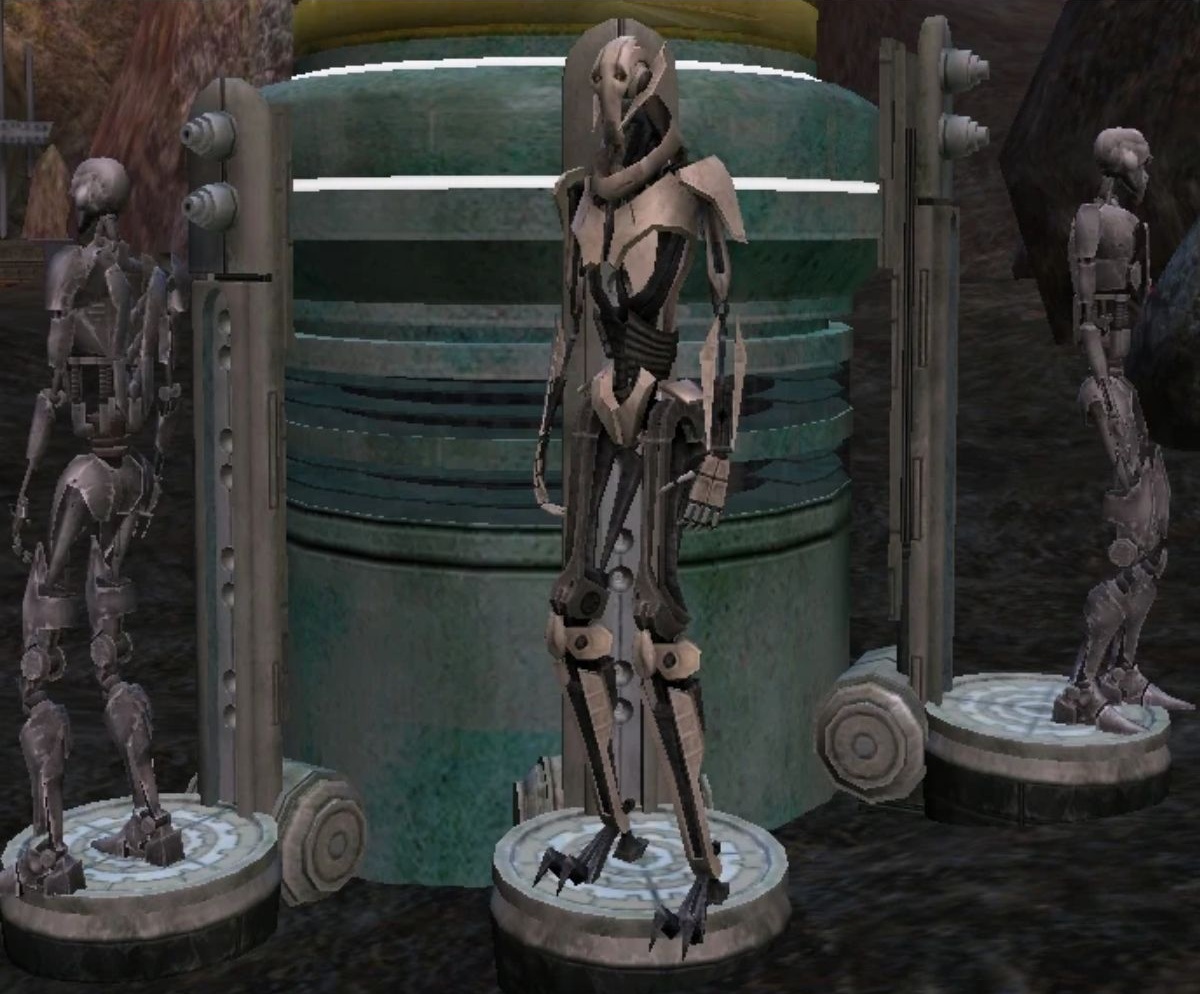Everyone remembers what happened to General Grievous on Utapau in Revenge of the Sith. Obi-Wan Kenobi blasted him apart with a blaster, ending the cyborg general’s reign of terror once and for all — or so it seemed.
But here’s something most fans don’t know: in Legends, Grievous’s body didn’t just stay there. Palpatine ordered it to be recovered… and turned it into something else entirely.
Grievous’s Body Was Stored in a Secret Imperial Facility
Like I mentioned earlier, this comes from Star Wars Legends, specifically the book The Story of General Grievous: Lord of War. The book covers Grievous’s entire journey — from his early days as a warrior on Kalee to how he eventually became part of Palpatine’s grand plan to control the galaxy.
But let’s jump straight to what happened to his body after that final duel with Obi-Wan Kenobi on Utapau. According to the book, once Grievous was killed, clone troopers recovered his remains and transported them to one of Palpatine’s hidden storehouses, right there on Utapau.
The book describes “After the implementation of Order 66, Imperial clone troopers were ordered to recover Grievous’ inanimate corpse. Largely intact but devoid of the brain tissue that made it conscious. Grievous’ body joined the general’s starfighter in storage in one of the Emperor’s secret storehouses on Utapau.”
What Was Left of Grievous Became the N-K Necrosis Experiment

After collecting dust in a secret Imperial storehouse for years, Grievous’s remains were chosen for a classified droid project known as the N-K Project. The Empire handed his body over to cyberneticist Nycolai Kinesworthy, who was tasked with advancing combat droid technology using heuristic programming.
The project was based on Kashyyyk, deep within the Myyydril Caverns, where Kinesworthy worked under the supervision of Merili, a dark side user assigned to watch over the lab. To assist his research, Kinesworthy was joined by another scientist, Treun Lorn, a man obsessed with death who helped source materials and test subjects for their experiments. With the help of the assassin droid IG-72, they also captured two MagnaGuards to serve as training dummies for their new prototype.
Grievous’s body was rebuilt and reprogrammed with Kinesworthy’s experimental AI, turning him into a new droid named N-K Necrosis. The MagnaGuards, now called NK-3s, were used to retrain Necrosis in the same lightsaber combat forms that Grievous had once taught them. The result was a droid that not only moved and fought like Grievous, but could also process combat strategies with near-human flexibility.
Necrosis carried a carmine double-bladed lightsaber once owned by Darth Zannah, containing a Sith crystal known as Bane’s Heart. He also wielded Grievous’s personal DT-57 blaster, now called the Grievance Striker, along with an Utapaun Nightblade recovered from the general’s starfighter.
From the book:
“Necrosis’ weapon of choice was a carmine double-bladed lightsaber that once belonged to the Sith Lord, Darth Zannah. The weapon, stored aboard Grievous’ personal starfighter with some of his earliest lightsaber trophies, originally came into the ownership of the cyborg after murdering a dark Jedi possessing it, either on the toxic world Dica or the burial planet Necropolis. The weapon was said to contain Bane’s Heart, an alchemically treated Sith lightsaber crystal given to Zannah by her Sith Master.”
Over time, Necrosis developed an abnormal level of self-awareness. He began to question his identity, wondering whether he was just a machine or the true successor to Grievous. But that phase was brief. A group of scavengers eventually stormed the lab, destroyed Necrosis and the NK-3s, and looted his remains. His blaster, lightsaber, and even his armor were sold off on the black market.
Grievous was gone. And so was the droid that tried to become him.

